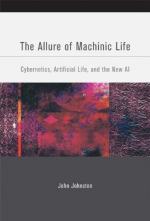|
This section contains 1,086 words (approx. 4 pages at 300 words per page) |

|
Artificial life (also known as "ALife") is an interdisciplinary study of life and lifelike processes by means of computer simulation and other methods. The goals of this activity include understanding and creating life and lifelike systems, and developing practical devices inspired by living systems. The study of artificial life aims to understand how life arises from non-life, to determine the potentials and limits of living systems, and to explain how life is connected to mind, machines, and culture.
The American computer scientist Christopher Langton coined the phrase "artificial life" in 1987, when he organized the first scientific conference explicitly devoted to this field. Before there were artificial life conferences, the simulation and synthesis of lifelike systems occurred in isolated pockets scattered across a variety of disciplines. The Hungarian-born physicist and mathematician John von Neumann (1903–1957) created the first artificial life model (without referring to it as...
|
This section contains 1,086 words (approx. 4 pages at 300 words per page) |

|



